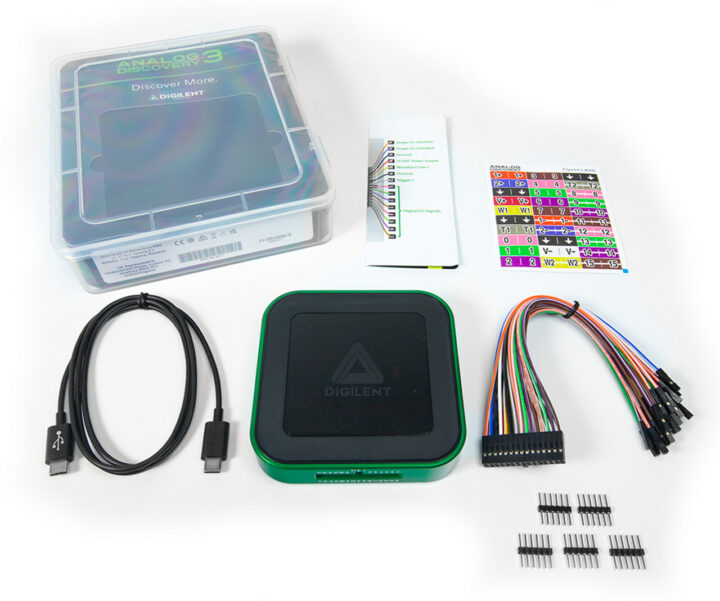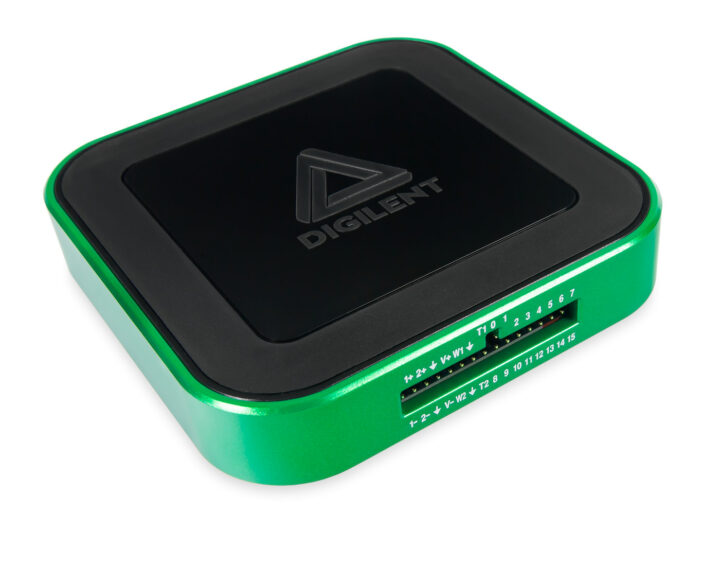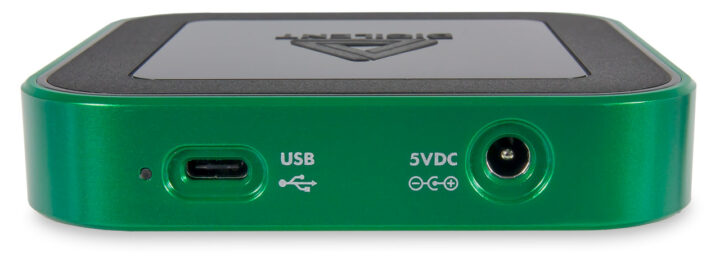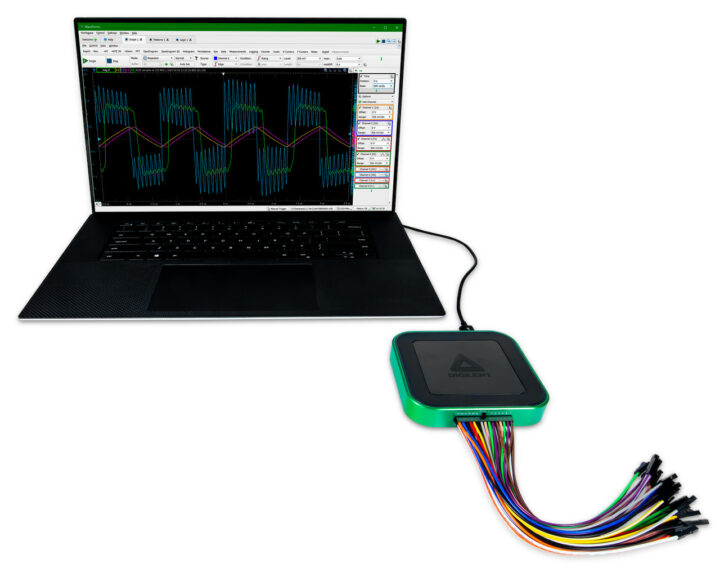Digilent Analog Discovery 3 is a USB oscilloscope with a sample rate of up to 125 MS/s, that can also be used as a waveform generator, logic analyzer, and/or a variable power supply up to 5V.
Several other features are also enabled through its software and the USB-C oscilloscope can also act as a spectrum analyzer, a network analyzer, an impedance analyzer, a protocol analyzer, a data logger, a voltmeter, and supports in-app scripting.
Analog Discovery 3 features highlights:
- Xilinx FPGA-based design
- Host interface – USB Type-C port
- Oscilloscope
- 2x differential channels with 14-bit resolution at up to 125 MS/s per channel with a +/-25 V input range, 30+ MHz bandwidth with BNC Adapter
- User-configurable input filters and lock-in amplifier
- FFT, Spectrogram, Eye Diagram, XY Plot views, and more
- Arbitrary Waveform Generator
- 2x channels with 14-bit resolution at up to 125 MS/s per channel with a +/-5 V output range, 12 MHz bandwidth with BNC Adapter
- Standard waveforms, amplitude, and frequency modulated signals, direct playback from analog inputs, custom waveforms, and more
- Logic Analyzer and Pattern Generator
- 16x digital I/O channels at up to 125 MS/s per channel
- Individually-configurable 3.3 V digital inputs and outputs, 5 V tolerant inputs
- SPI, I2C, UART, CAN, JTAG, ROM logic, custom protocols, and more
- Programmable Power Supplies
- 0.5 V to 5 V and -0.5 V to -5 V variable power supplies
- Up to 800 mA per channel when used with an auxiliary power source
The USB oscilloscope relies on WaveForms software for Windows, Linux, macOS, and some Arm devices such as the Raspberry Pi SBC. The program enables the use of the available analog and digital instruments and provides an SDK for hardware control in C, C++, Python, and other languages, as well as support for LabVIEW and MATLAB integration.
The Analog Discovery 3 ships with a plastic project box, a USB-C to USB-C programming cable, one 2×15 flywire signal cable assembly, a pack of five 6-pin male headers, and 30-pin flywire labels, and the company recommends 5V/2.5A or 5V/4A switching power supplies, the Audio Adapter+, a BNC Adapter along with the P2150 BNC Oscilloscope Probe, a Transistor Tester, an Impedance Analyzer, and a Breadboard Adapter to make full use of the kit.
 Digilent will start selling the Analog Discovery 3 for $379 from June 14 onwards
Digilent will start selling the Analog Discovery 3 for $379 from June 14 onwards
Via Hackster.io

Jean-Luc started CNX Software in 2010 as a part-time endeavor, before quitting his job as a software engineering manager, and starting to write daily news, and reviews full time later in 2011.
Support CNX Software! Donate via cryptocurrencies, become a Patron on Patreon, or purchase goods on Amazon or Aliexpress







